Red Fox Diet - What Foxes Eat
Suffice to say, foxes are extraordinarily opportunistic, omnivorous predators. Nonetheless, most studies agree that they feed predominantly on small mammals, particularly rodents (rats, mice, voles and the occasional squirrel) and lagomorphs (rabbits and hares); in rural areas these groups together typically account for about 50% of the diet.
Mammals in the diet
Bank voles (Myodes glareolus) and field (or short-tailed) voles (Microtus agrestis) are the most numerous of the small mammals taken, although mice and rats often appear on the menu, especially in urban areas. In my experience, fox cubs commonly tackle brown rats and I suspect probably do so more often than many adults because these are some of the first mammals they encounter while confined to the vicinity of the earth that trigger their prey drive. Certainly, cubs often seem as keen to play with a dead rat as eat it. During his studies with his captive vixen, David Macdonald found that she showed a clear preference for field voles over both bank voles and wood mice (Apodemus sylvaticus). Roger Burrows found the same preference in his local foxes; they ate field voles most often, with bank voles, wood mice, brown rats (Rattus norvegicus), and grey squirrels (Sciurus carolinensis) taken on occasion. Wild rodents taken elsewhere include harvest mice (Micromys minutus) hamsters (Cricetinae), gerbils (Gerbillinae), ground squirrels, pocket gophers (Geomyidae), deer mice (Peromyscus spp.) and groundhogs (Marmota monax).
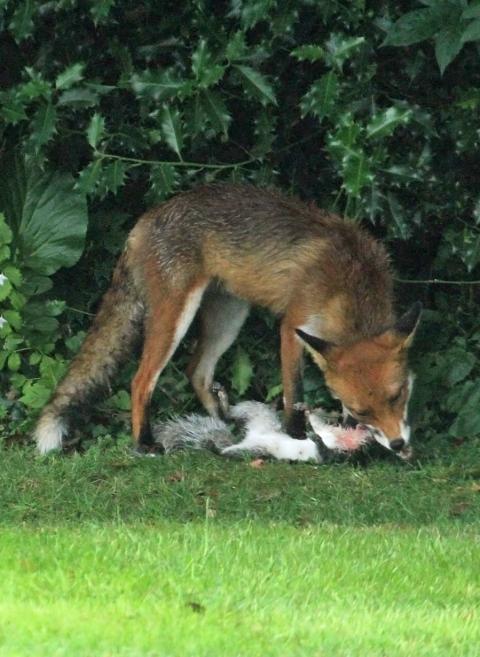
Shrews (family Sorcidae) are often caught, and sometimes cached, but rarely eaten, presumably because they are distasteful. Scent glands on the flanks of shrews produce an oily secretion with a strong-smelling "musty" odour, which is used in scent-marking and communication and probably makes them unpalatable to many predators. Moles (Talpa europaea) also excrete a musky-odoured secretion from scent glands on their stomach -- again, like shrews, this is probably distasteful to predators and explains why, although moles are sometimes caught by foxes, they're seldom consumed. Indeed, Lloyd presented four captive fox cubs with a mole each and observed how:
"Three of the cubs promptly buried the moles and the fourth one ate one foreleg and shoulder, which it vomited a few minutes later."
In his book, Free Spirit, Michael Chambers described how he often saw his hand-reared vixen carrying a mole, despite never showing any inclination to eat them. Chambers wrote that moles were "one outstanding exception to an almost general rule" that foxes have a universal pallet. David Macdonald, in a 1977 paper to Mammal Review, concluded that insectivores such as shrews and moles were only eaten when other, more preferable, foods were scarce. In most cases, moles and shrews are probably unintentional victims of the fox's hunting method (see below), which essentially means the fox doesn't know what it is hunting until it has caught it.
Hedgehog (Erinaceus europaeus) remains occasionally turn up in fox scat and there is much debate about how significant foxes are as a predator of these spiny mammals (see QA). There are many stories telling of the various methods that foxes apparently have to get a hedgehog to uncurl (including urinating on it or rolling it into water), but they're rarely witnessed. That said, I have come across a couple of reliable accounts of foxes urinating on hedgehogs, although it remains unknown whether it was to get the animal to uncurl, or just part of their predilection for scent-marking conspicuous objects in their territory. In neither case did the hedgehog unroll. Recently, however, there have been concerns raised on discussion lists that foxes are a significant force in the decline of hedgehogs.
Unquestionably, foxes can kill hedgehogs. The problem is that nobody knows how commonly this occurs and there is currently no evidence, that I know of, to support such inferences, although in Urban Foxes, Stephen Harris and Phil Baker noted that there was an increase in Bristol's hedgehog population following the outbreak of mange (which drastically reduced fox numbers) in the mid-1990s. We don't know, however, whether this was a reduction in predation or an increase in food (foxes and hedgehogs both feed heavily on worms and insects), or both. There are certainly some reports of foxes feeding heavily on hedgehogs when times are tough. In their Mammals of the Soviet Union, Vladimir Heptner and Nikolaï Naoumov described the diet of foxes living in central forest districts of the Soviet Union during a vole population crash in the mid-1930s:
"In these years, the stomachs of foxes were at times completely full of hedgehog remains, swallowed along with the skin as well as quills of these animals, which protruded into all sides, bulging out from beneath the thin wall of the stomach."
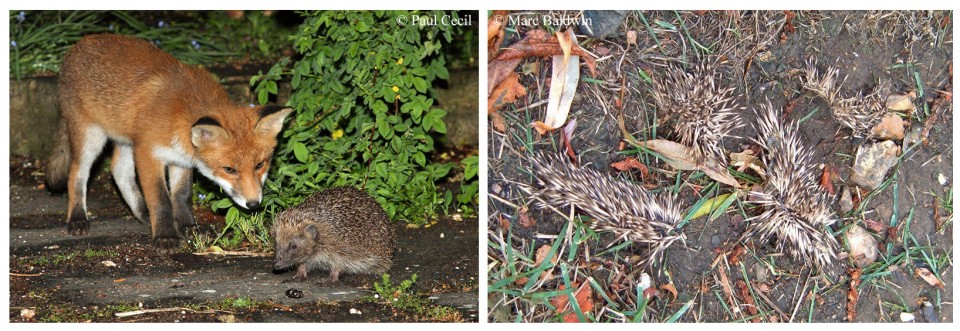
Another study, this time in South Devon found that hedgehogs once again formed a notable component of the diet during harsh weather. In his study of the diet of foxes living on Higher Well Farm between March 1974 and August 1975, D.F. Richards found that hedgehog remains appeared more often in winter than other seasons and, in a 1977 paper to the Journal of Zoology, he wrote:
"The most frequent occurrence of hedgehogs in the present survey was in Winter, when remains were found in 13% of scats, and these animals may well have been dug out of hibernacula."
Generally-speaking, however, hedgehogs don't appear to contribute a substantial amount to the diet, being either absent from most studies or rarely representing more than a couple of percent of the total food. Moreover, it is likely that many occurrences of hedgehog remains represent scavenging of road-kill. Foxes tend to bite the spines off, leaving clumps of spines and skin, while badgers effectively skin the animal, leaving a complete jacket of spines. My experience is that foxes tend to be curious of hedgehogs.
Other mammal remains occasionally reported in Red fox diets include otter (Lutra lutra), stoat (Mustela erminea), deer (including red deer, Cervus elaphus, roe deer, Capreolus capreolus, Reeves' muntjac, Muntiacus reevesi, and Chinese water deer, Hydropotes inermis - some will reflect scavenging from carcasses of adult deer, but calves/kids are susceptible to fox predation as, perhaps, are adults of the smaller species), European badger (Meles meles), opossum (Didelphidae), porcupine (Hystricomorpha), domestic cat (Felis catus), water vole (Arvicola amphibius) and wild boar (Sus scrofa). Weasels (Mustela nivalis) are also occasionally taken and during the protracted heatwave and drought in August 2022, a fox shot crossing a stubble field in Bedfordshire was found to be carrying two weasels. In a study of fox diet on moorland in Hungary, Jozef Lanszki found wild boar (adult and piglet) remains in 18 (23%) of the 77 scats he dissected. In their study of fox and coyote diet in Rockefeller State Park in New York, published in Urban Ecosystems during 2021, Michaela Peterson and colleagues recorded raccoon (Procyon lotor) remains in droppings during both 2011 and 2012, although this may have been scavenged. Fox remains also turn up occasionally, suggesting cannibalism; presumably also either scavenging or infanticide (see infanticide QA and below).
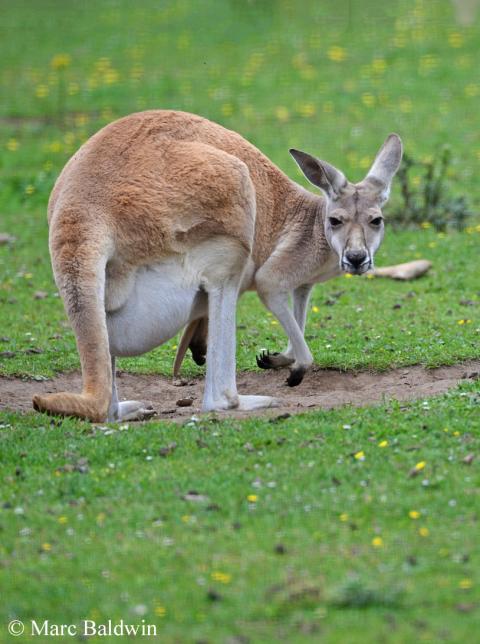
The remains of kangaroos are sometimes found in the faeces of foxes from Australia, but it is unclear how much is scavenged as carrion and how much is directly predated. A study published in 1971 found that red kangaroos (Macropus rufus) shot and left by hunters were an important food source for foxes living in arid New South Wales, while another study in Victoria (published in 1973) found grey kangaroo (M. giganteus) remains, again presumed scavenge, in fewer than 1% of the scats analysed. Robyn Molsher and colleagues at Australia's CSIRO found kangaroo remains in 96 (38%) fox stomachs collected from New South Wales between July 1994 and November 1996 and suggest that flesh from adult roos is likely to have been scavenged, but juveniles may have been predated. In their 2000 paper to Wildlife Research, Molsher and her colleagues noted:
" ... there is increasing evidence to suggest that predation on the juveniles of larger macropods is prevalent ... "
In Australia, where foxes are an invasive species, they can have a significant impact on endemic mammal species (see: Interaction with other Species). Finally, there is one confirmed report that I am aware of recording human flesh in the stomach of a fox. A study of almost 2,000 fox scats from Sherbrooke Forest Park in south-eastern Australia by Hans Brunner, John Lloyd and Brian Coman found human remains in one scat -- it turned out that the fox had scavenged the corpse of a suicide victim.
There are a few reports of foxes disrupting the burial places of people in Britain; particularly the "pauper graves" of children, which are often coffins made of cardboard that quickly degrade in the soil. Indeed, Wandsworth council in London were prompted to review their policy of pauper graves after a fox excavated the body of a dead baby in September 2009. It should be noted that, while such events are distasteful to most of us, and traumatic for the families, to a fox a dead animal is food, regardless of whether it's a human or a deer.
When prey numbers (especially voles) are high, foxes may gorge and there are reports, mainly from gamekeepers, of foxes stuffed with voles. In 1931, Russian biologist Sergei Ognev, for example, wrote of one fox stomach containing 40-60 voles, while Robin Page -- in his 1986 book, A Fox's Tale -- told of a gamekeeper at Windsor Great Park in Berkshire who apparently caught a very fat fox; upon dissecting it, 203 young mice and voles were recovered from its stomach. Indeed, throughout much of Britain, voles appear to be the most important small mammal prey species in all seasons. Vole numbers, however, cycle (i.e. boom and crash) in a manner than isn't reflected in the fox population, because foxes switch to other rodent species and larger mammals during poor vole years.
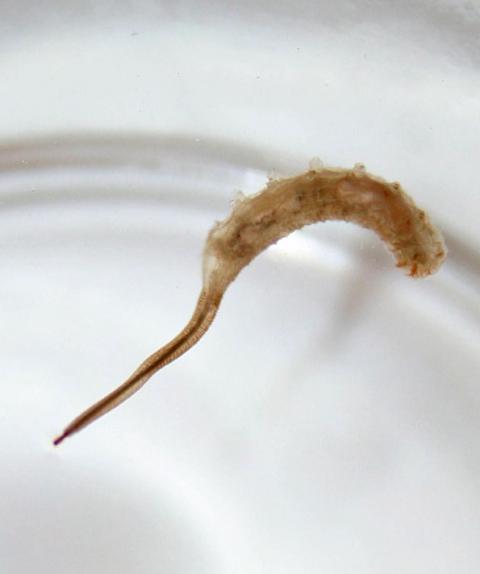
Invertebrates in the diet
Next, in order of occurrence, tend to be invertebrates, particularly members of the Caribidae (beetles), Lepidoptera (butterflies and moths) and Lumbricina (earthworms), although many other groups, including orthopterids (grasshoppers and crickets) and arachnids (spiders) are also taken. There are some reports of foxes taking molluscs (slugs and snails), although these are perhaps less readily eaten, and I have seen foxes lick several times at a slug before walking away without showing any further interest. Foxes also seem to have a penchant for rat-tailed maggots, hoverfly larvae (both found in stagnant water) and crane flies (daddy-longlegs). Overall, depending on habitat and season, invertebrate prey can contribute 30% or more of the diet -- in desert regions, such as Saudi Arabia, insects may be the primary component of the diet (knocking mammals into second place). Indeed, insects tend to feature highly in the diet during the late summer and autumn months, when insect larvae, craneflies, moths and earthworms may be eaten en masse; it is not uncommon to find fox scat glistening in the sunshine from all the elytra (beetle wing cases). I have watched a fox walk across a lawn "hoovering up" newly emerged craneflies and, in June 2020, Keith Ross filmed a fox catching moths in flight in his garden in Kent, which was shown on the BBC's 2020 Springwatch series.
Insects and worms will often contribute a significant proportion of a growing cub's diet as summer wears on (particularly during August and September) as the cubs catch them in the vicinity of the earth. In a fascinating 1980 paper to the Zeitschrift für Tierpsychologie David Macdonald described his observations of fox worming behaviour (i.e. worm hunting). Macdonald found that, during some months, earthworms may account for more than 60% of a fox's calorific intake -- if you consider the average worm yields about 2.5 calories and the average fox requires about 500 per night, this equates to some 120 worms in a night.
Walking at an average speed of a metre (3.5 ft) every 2.5 seconds, the fox can apparently fill this quota in less than an hour in good worming conditions. That said, Macdonald did observe that dominant and subordinate members of the group hunted in different areas and suggested that hunting for earthworms in certain (poorer) parts of the territory is the prerogative of low status or younger foxes; dominants appeared to monopolise residential areas where they often hunted for worms on lawns. In a more recent paper, to Behavioral Ecology in 2017, Jo Dorning and Stephen Harris at Bristol University found something similar -- that dominant animals monopolised resources in gardens, forcing subordinates to more frequently use patches of lower quality outside of their territory.

Worming is apparently a learned skill, with one cub initially trying to hunt them using a mousing pounce. In competent adults, however, Macdonald described the technique in his paper:
"The fox walks very slowly with frequent pauses, often followed by a change in direction. The animal's head is held in the normal walking position (just above the horizontal line extending along its back), and its ears are perked forward. A fox hunting for worms gives the impression that it is predominantly using hearing to locate them ... Immediately prior to capture, the fox invariably moves it ears, apparently locating the exact position of the worm. Sometimes this takes several [seconds] and involves side to side movements of the head. The fox then rapidly plunges its snout into the grass and grasps the worm between its incisor teeth."
Apparently, when the worm has a good grip in its burrow the fox doesn't simply pull, because this would snap it. Instead, once the worm has been grabbed Macdonald described a momentary pause before the fox raises its head "in a slow but accelerating arc", which dislodges the worm from its burrow.
The problem with worms as prey is that their availability is unreliable, varying with the habitat and prevailing weather conditions. In Macdonald's study area of Boar's Hill, Oxford, worms were almost twice as abundant in fields with livestock (and thus plenty of dung to fertilise the soil) than in crop-only or fallow fields. More stark comparisons can be made between cereal fields, which contain about one worm per sq-metre (per 11 sq-feet), and permanent pasture, which can house 15-or-more worms per metre.
Macdonald points out that the distribution of worms also changes according to the livestock in the field -- horses, for example, deposit their droppings in one part of the field and do not graze there, so earthworms are clumped in this region (twice as many earthworms here than in the grazed areas), while cattle drop their dung and graze all over a field, causing the worms to be more evenly distributed. In essence, where in a field a fox chooses to hunt depends on what livestock is grazing in it.
Finally, the prevailing weather influences worm abundance and distribution, with fewer worms found on windy, dry and/or cold nights. Indeed, warm, still, damp nights are best for worming as eight or more worms per sq-metre may surface in good pasture. Macdonald found that most worms were eaten during February, with the fewest in July, although this varied substantially with the territory (one group were eating some 150 worms each per night, while their neighbours were eating only 25 each per night). Where worms are eaten in large quantities the scat may contain a considerable amount of soil, released from the worms' stomachs as they are digested.

Download: Red fox diet graphs .jpg 635KB
Birds in the diet
Birds are next in our list and, as with most other prey species, the frequency with which they are taken varies locally and often seasonally. In fact, birds represent an interesting case because it has been suggested that they (even domestic fowl) are not a preferred prey item of foxes. Birds, it seems, are predominantly taken during the spring and early summer, when foxes have hungry cubs to feed. In a seminal 1969 study of the diet of fox cubs in Sweden, for example, Jan Englund found that mammals (mainly voles and hares) and birds (including gamebirds, poultry and thrushes) were the most important food items in all her study areas. Torbjorn von Schantz, also working in Sweden, found something similar (birds were an important food for the cubs), but also noted that the adults rarely ate birds, although they frequently caught them to feed to their cubs.
Of the "large birds" listed in von Schantz' study, 25% were pheasants (Phasianus colchicus) and the vast majority (70%) of these were taken during the cubbing period. Indeed, it appears that adults bring larger items (such as poultry) back to the cubs, while eating smaller species themselves. This implies a shift from a "time maximizing" feeding strategy (i.e. taking whatever's most abundant or easiest to catch at the time) to an "energy maximizing" one (seeking out prey of higher calorific value, even if it's more difficult to find or catch) and this could explain the taking of seemingly unwanted prey, such as birds, at certain times of the year. Either way, the suggestion is that the majority of the birds go to the cubs and David Macdonald found that his hand-reared vixen cub was uninterested in eating chickens once she reached three months old.
Despite the foregoing, in some regions (particularly forested habitats) adult foxes will frequently take birds, and biologists in California found that bird remains (namely duck and small passerines) were found in 70% of fox scats collected from built-up areas (egg shells were found in 5% of droppings).
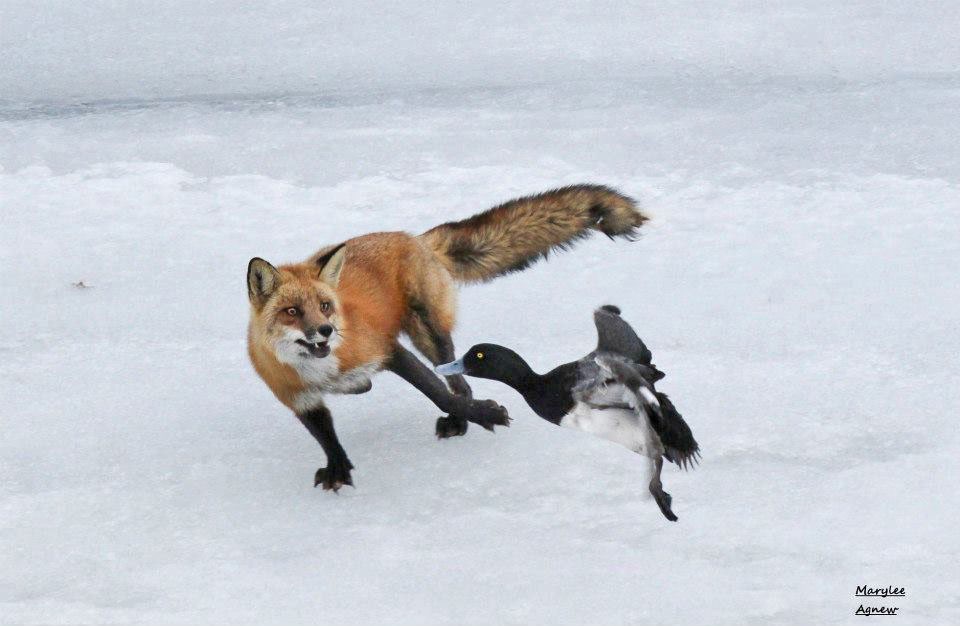
They may also cause considerable damage to colonies of nesting birds -- although, again, this is often most pronounced when they're feeding cubs -- especially if bad weather causes the birds to sit tight on their nests, allowing the foxes to walk right up and grab them. The wild birds most often featuring in fox diets tend to be Passerines ("song birds", such as blackbirds, robins, starlings, etc.), Columbiformes (doves and pigeons), Galliformes (chickens and water fowl), Larids (gulls) and Charadriiformes (wading birds), although other species are occasionally taken.
In his 1968 book, Wild Fox, Roger Burrows described finding a cached tawny owl (Strix aluco), half-buried in dead leaves; he doesn't mention whether it was an adult bird but, assuming so, it was presumably scavenged as a mature tawny would seem more than a match for a fox. Alternatively, the fox may have found the bird injured, enabling an easier, less risky capture. Indeed, Burrows twice recovered lead shot from the scat of his local foxes that also contained feathers, suggesting that they had taken birds "winged" (i.e. shot and injured but not killed) by landowners. Foxes will take gamebirds, particularly pheasants and grouse when the opportunity arises and, in one rural area of north-east Dorset, Game Conservancy biologist Jonathan Reynolds found that such fowl accounted for about 16% of the diet. This is discussed further in the Interaction with other Species section.
Plant material - fruits and vegetables
Foxes will also eat plant material, with fruits (especially berries) being important components of their autumn diet. Blackberries (fruits of the Rubus genus) are much favoured by foxes and, in his 1980 book The Red Fox, Huw Lloyd described how his colleague, Bernard Williams, while studying fox stomachs for the presence of parasites, found one: "stuffed full from end to end with nothing but blackberries".
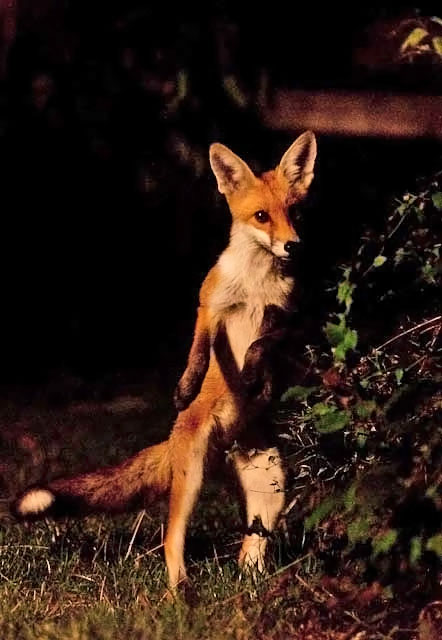
Similarly, a study of foxes in rural Denmark, published in 2015, found that 76% of the stomachs they examined contained fruit remains. Indeed, foxes can be very resourceful when it comes to obtaining fruit, including climbing trees and, as the fantastic photo (left) by reader Steve Barker from Middlesex shows, they may even stand on their hind legs to reach blackberries higher up on the bush. It appears that foxes can also be very gentle when removing berries from the bush and, describing his first encounter with a fox, during August 1944, badger biologist George Pearce wrote the following in his book Badger Behaviour Conservation and Rehabilitation:
"I was standing by an oak tree when I spotted a fox walking very slowly along a hedgerow, stopping from time to time, reaching into the hedge to bite off a blackberry. Not a single leaf moved, so gentle was it when picking the fruit."
I have found fox scat that is almost jet black in colour from the number of undigested blackberry seed pericarps and readers have sent in photos of droppings equally full of other fruit seeds, particularly cherry stones.
Foxes will eat both wild and cultivated fruits (in some instances vegetables and crops, such as corn and barley, too) and those most commonly consumed include blueberries, blackberries, raspberries, cherries, persimmons, mulberries, apples, plums, grapes, dates, figs and even acorns. Presumably, such fruits serve as a source of vitamin C, although being canids they have the gulonolactone oxidase enzyme that we (and most other primates) have lost, allowing them to synthesize ascorbic acid from glucose. In Australia, a study of 255 fox stomachs from New South Wales found sweet briar (Rosa rubiginosa) and kurrajong (Brachychiton populneus) fruits were taken, particularly during the winter. Yew berries (fruits of the Taxus baccata tree) are also eaten by foxes, apparently without ill effects.
Yew berries are composed of a tough seed surrounded by a soft fleshy fruit called the aril -- the aril is edible (its bright red colouration attracting many frugivorous birds and mammals), but the seeds are widely toxic to animals, owing to the presence of an alkaloid chemical called taxane. In most species, the aril is digested and the seed passed intact (hence the animal doesn't suffer any toxic impact), but in the case of the fox, it seems that the fruit may not always be digested. In his Wild Fox, Burrows noted how the foxes of Woodchester Park in the Cotswolds ate substantial numbers of yew berries, but the seed always came through the gut whole, along with the red aril.
From photos I have seen of scat containing yew seeds, however, it seems that most of the aril is digested, although conspicuous pieces of red fruit are also passed. The photo on the right below was taken by Bill Welch in Orpington's High Elms Country Park during September 2011 and illustrates what I've seen elsewhere: numerous seeds with some interspersed aril. Bill tells me he saw a lot of "yew seed scat" that year and I agree with his analysis that the scats look "distinctly uncomfortable".
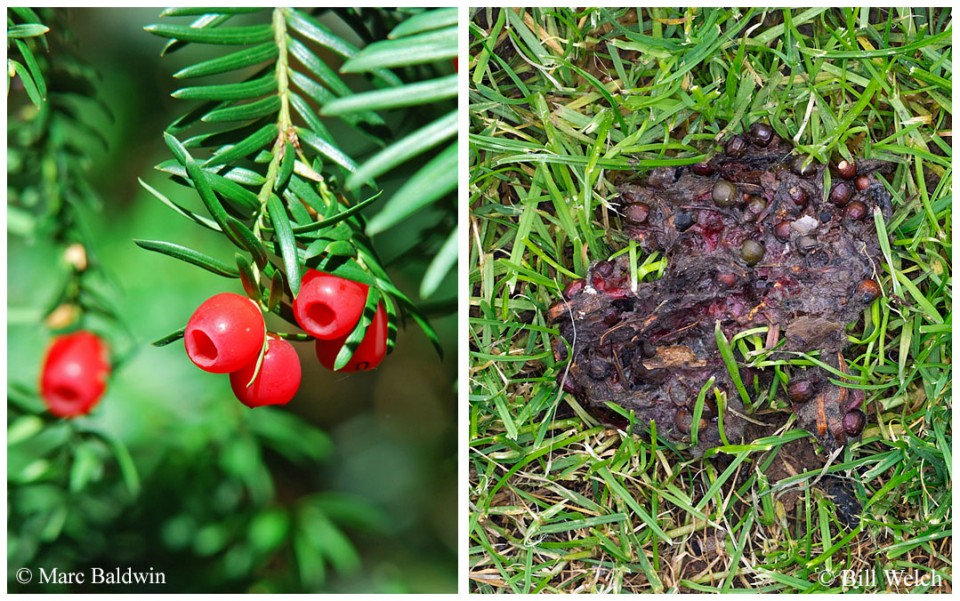
Other plant material includes nuts (especially hazel nuts), grasses, sedges and tubers. Grass is commonly found in the stomachs and scats of foxes, although it is not clear how much is deliberately eaten (some species are known to eat grass to help remove intestinal parasites, such as tapeworms) and how much is ingested incidentally, while catching and consuming other prey. The incidence of fruit in the diet varies locally and seasonally, but generally accounts for 10% to 30% of the diet, with cereal crops representing only about 1% of the diet. One study in County Kildare, Ireland, for example, found that seeds and berries made up about 15% of the foxes' diets during the summer, increasing to 25% in the winter. Fruits may also be an important food source for cubs and some authors have linked poor cub survival to poor fruit yields.
Less common items in the diet - amphibians, reptiles and eggs
While the above prey groups constitute the bulk of a fox's diet, there are other species that occur less commonly. Amphibians, particularly frogs, and reptiles including small snakes and lizards are sometimes taken. Indeed, a study in the North Caucasus steppes of Russia found these "herps" made up 30% of the local foxes' diets. Similarly, Robyn Molsher and her colleagues found few reptile remains in the stomachs and scats from their study population on the foreshores of Lake Burrendong in New South Wales, although the stomach of one fox shot in October 1995 contained the remains of eight legless skinks (Anomalopus leuckartii), one blind snake (Ramphotyphlops proximus) and one iguana, suggesting individuals may develop a taste for reptiles. Interestingly, Molsher and her team also observed that most reptiles were taken during October and November (spring), with cubs and vixens most likely to eat them; 82% of remains were found in the stomachs of vixens.
Fish are also taken on occasion and, in his 1968 book Town Fox, Country Fox, Brian Vezey-Fitzgerald described watching a fox use its paw akin to a cat to scoop a golden orfe (Leuciscus idus) out of his garden pond. Foxes in coastal regions will search the beach and peripheral environs for dead fish, crabs and other shellfish (including cockles and razor-fish) as well as seabirds. Eggs are highly-prized by foxes, presumably for their protein, fats and cholesterol, and are often carried away and buried (cached) for later use. Indeed, if you wake one morning to find an egg buried in your flower border or bedding pot, it is almost certainly the work of a fox.
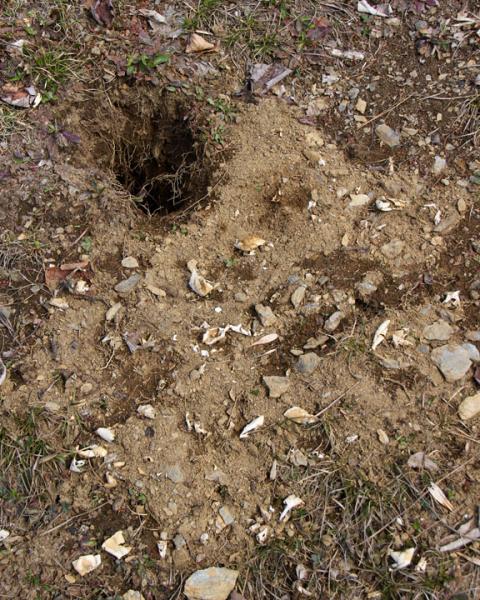
Foxes generally take (wild and domestic) bird eggs -- on occasion, causing damage to the nests of gamebirds -- but they will also take the eggs of reptiles. As early as 1983, University of Sydney biologist Mike Thompson reported on the predation of the nests of the Murray River turtle (Emydura macquarii) in Australia - 96% of nests were raided, most (93%) by foxes. Similarly, during July 1992, David Macdonald and colleagues studied 28 loggerhead turtle (Caretta caretta) nests on Dalyan Beach in south-west Turkey and found that 25 (89%) were raided by foxes. Interestingly, nests were invariably raided by a single adult, with most (88%) eggs being cached individually in shallow scrapes further up the beach, but were recovered by an adult and cub, suggesting that the eggs were being cached to feed offspring.
More recently, in a paper to the journal Oryx during 2011, David Kurz at Princeton University , USA and colleagues reported on how best to protect Loggerhead nests from mammalian predation. Kurz and his co-workers setup a series of artificial nests along a stretch of beach on North Carolina's Bald Head Island; some nests had chicken eggs, some bacon and chicken scraps and they covered some nests with plastic fencing, some with wire cages and left others (the controls) open.
The biologists found that foxes attended all sites equally (based on scat and footprints), but successfully predated only two (25%) of the eight nests covered with plastic screen and couldn't gain access to any with mesh cages, even when they were highly motivated (i.e. going for meat-filled nests smeared in either bacon or chicken grease). In contrast, all control nests were raided. The researchers concluded that plastic screening was effective at protecting turtle nests from foxes (which they found to be by far the most significant mammalian nest predator on the beach) and had the benefit that the plastic composition of the screens wouldn't interfere with the hatchlings' magnetoreception, as galvanized metal cages are thought to.
Along similar lines, I have heard stories of foxes eating frogspawn, but have yet to find any empirical evidence for this, although it is quite well known among cats.